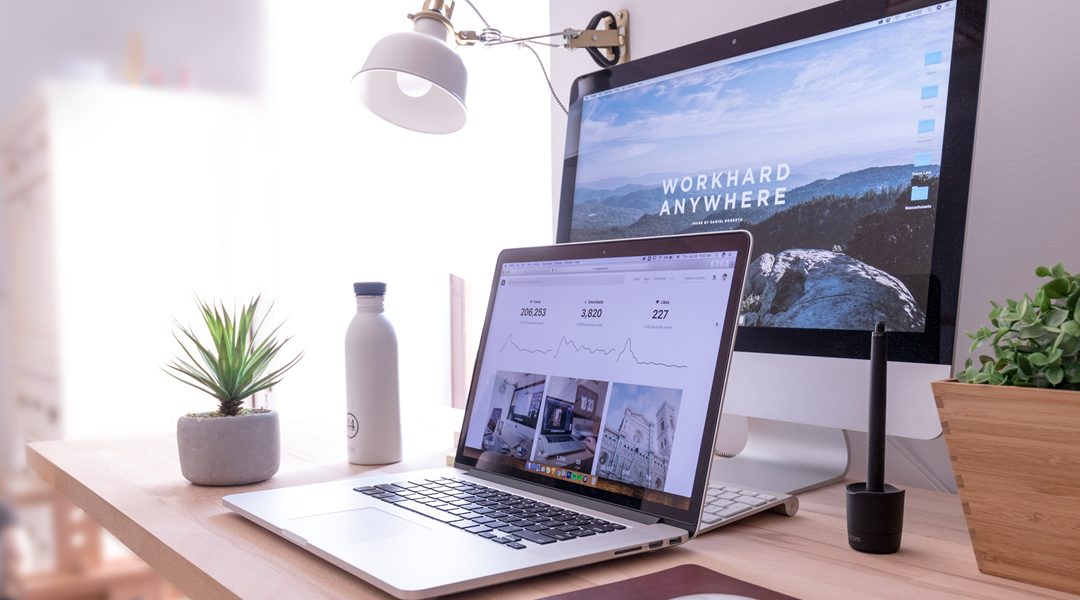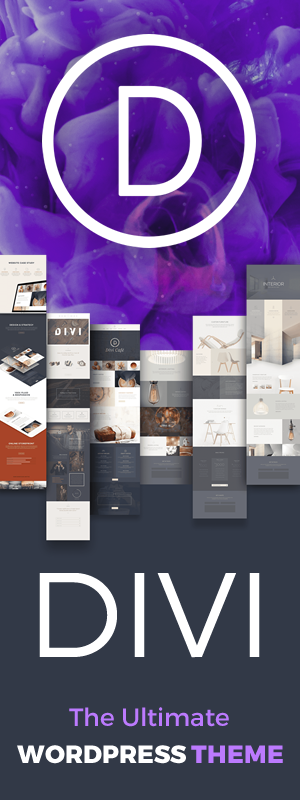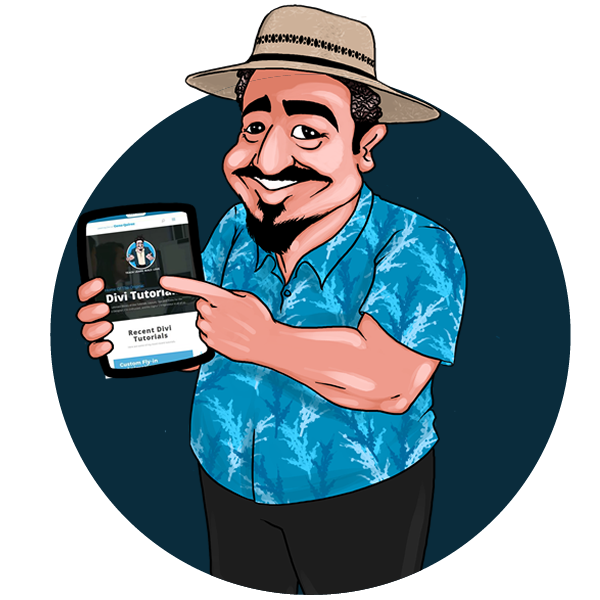My business, online authority and SEO experience have grown significantly over the past few years in large part due to the blog communities I have managed such as the Divi Tutorials Blog here on Quiroz.co, Engaging Worklife Blog (montereypremier.com), the Marina Chamber of Commerce Community Blog (marinachamber.com), and most recently the Connect Marina Blog (connectmarina.com).
Blogging Is Not Just For Bloggers
When most people hear the word blogger, they think of stay at home parents who write articles as a hobby. But blogging plays a crucial role in bringing value to your website and your brand. Here are a few of the benefits of blogging.
Bring Your Brand to Life.
Having a blog humanizes your company and allows you to speak to those on the other side. If gives your company a chance to reach out and put it’s name in the community and communicate with your followers and supporters.
Increased Exposure
When you start putting out quality content on your website, you increase the opportunities to invite people back to your site. People do not usually return to a website if it does not change and have new content. So if you are trying to get more exposure to your product, business or service, blogging is the best way to get your brand in front of people on the web.
[bctt tweet=”When it comes time to pull out the wallet, most people are willing to pay a little more to buy a product or a service from a trusted brand rather than an unknown brand. ” username=”genoq”]
Establish Authority
As more and more people visit your website to read and share your content, you will begin to establish yourself as an authority. When it comes time to pull out the wallet, most people are willing to pay a little more to buy a product or a service from a trusted brand rather than an unknown brand. So choose a topic you know well, and write about it as much and as often as you can.
Own Your Content
Although Social Media giants like Facebook, Twitter, and LinkedIn provide great places to post your content for the world to see, the problem is they own it, and it gets read on their platform, not yours. At a recent WordPress meetup here in Monterey, we had a guest visit from Robby McCullough, and he had this to say about posting content on Social Media.
“People do not think of Facebook as competition to WordPress but it is. The difference is Facebook owns all your content” – Robby McCullough
When I shared this on twitter, content developer Allison Smith had this to say in response…
“Make sure you’re not feeding Facebook’s (or any other network’s) beast to the detriment of your own platforms” – Allison Smith
Search Engine Optimization
The most important reason to have a blog on your website is Search Engine Optimization (SEO). Everyone knows page three on Google search is where websites go to die. You want to be on page one or two and the way we do that is to optimize your website for search engines.
In order to win the Google game, it’s essential to have quality, fresh and regularly updated content to ensure high rankings in a Google search. Here are a couple of relative factors that affect your search rankings on Google.
[bctt tweet=”Everyone knows page three on Google search is where websites go to die.” username=”genoq”]
Relevant Content
Google looks for websites that have fresh and relevant content that matches the criteria for what the user is typing into the search box. In other words, if you want your website to show up when someone types something into Google’s search box, you better have relevant and fresh content that matches their search terms.
The more relevant content you have, the better your chances of ranking higher. Blogging allows you to add new content in different context, increasing your chances of being found.
Traffic & Bounce Rates
The more people that visit your website the better your chances of ranking high on Google. If those visitors engage in the comments, or visit other pages, you score even more points from Google. Google tracks your traffic and whether or not people stay to read the article or bounce (leave).
If people bounce away from your article without visiting other pages on your website, Google sees that as your content not being relevant to the search term and next time around you might not rank so high for that search term.
[bctt tweet=”Blogging regularly can increase your exposure, improve SEO, establish your authority, establish your online presence, and take your organization to the next level.” username=”genoq”]
The Makeup of a Well Performing Blog Post
So as you can see, there are a number of reasons why I encourage every single customer, non-profit, business owner, and church ministry, to start blogging as soon as possible. Blogging regularly can make a difference by increasing your exposure, improving SEO, establishing your authority, establishing your online presence, and taking your organization to the next level.
For the rest of this article, I am going to share some blogging tips to help you make the most of your blog in a way that is Google friendly, and that will help you get started on your blogging journey.
What Is A Good Blog Word Count
If the message can be expressed in under 800 words, great! But I have found that between 800 & 1500 words are ideal for most readers, so I encourage somewhere in between 600-1500.
Proper Use of Header Tags
“Heading tags, as the name implies, are tags that are used for the creations of headings. The most important tag is the <h1> heading tag, and will usually be the title of a post. Heading tags have a top-down hierarchy from <h1> to <h6>” – Michael Heijmans, Yoast
Proper use of H tags is important for SEO. Think about your post being outlined with topics and subtopics. In WordPress, the page title is automatically assigned an H1 tag and is above or below the featured image depending on the WordPress theme you are using.
H1 tags should not be used anywhere else on the page. Each additional header or “key point” should use an H2 tag as the title of that key point or item. In some cases, it makes send to break down sub-key points with H3 and H4 tags as I did in this post.
3-5 Key Points Minimum
Each article should have no less than 3-5 key points (h2’s). Think of these as possible search terms the intended audience might type into a Google search box. Google will index your header tags so make sure to have them in each post.
Closing Each Post With An Invitation To Engage
Each article should include closing remarks or “Final Thoughts”. These thoughts should briefly summarize the article and provide a call to engage or comment. So ending with a question or a request is a great way to do this. User engagement also helps with SEO. When a reader clicks on that “comment” button, you have just created a conversion and conversions are good for building a brand, community, and authority.
Remember To Use Internal & Outbound Linking
Include at least one related link to another article on your blog, at least one link to a page on your website, and at least one outbound link to another article and resource, if it brings values to your post. It is good to use sites that are very popular with a lot of traffic. Those sites usually have excellent authority ranking on Google, and some of their “Google Juice” could help you rank better. Just make sure it is relevant to your topic. What is most important is that you are giving your readers options to dig deeper into relative content.
When I link to other websites, I like to change the link settings so that it opens in a new tab and they won’t have to leave your website to view the link.
Give Your Images An Alternative Name
Every image must have an alt attribute associated with the keywords of the article. WordPress gives you that option when adding the image. This is very important for good SEO and accessibility for those that use readers. The alternative text provides screen reader software users with access to all of the non-text information.
Featured Images
The ideal ”Featured Image” size should be approximately 1200×630 and a jpg so that it looks good on the page and in most Social Media platforms. The image should also be optimized for the web. If you do not have photo editing tools, I highly recommend Canva. It is an online photo editing tool great for blog images, social media images and more.
One of the most common mistakes people make is uploading a stock image without resizing it optimizing it. Most stock images are high resolution and are way too big to use on your website. These large files will begin to affect the speed and performance of your website. One of my favorite optimizing tools is TinyPNG. TinyPNG uses smart lossy compression techniques to reduce the file size of your PNG files.
If you have your own images, that’s great, but if you need to find an image, I recommend using images that have the Creative Commons Zero license (CC0) which means you can use it without purchasing a license or giving attribution. Here are some great sites you can use to find such images.
- https://unsplash.com/
- https://www.pexels.com/
- http://stokpic.com/
- http://www.splitshire.com/
- http://allthefreestock.com/
Add an Excerpt
Each post should include a short excerpt that is 1-2 sentences long. The excerpt box can be found underneath the blog post area. This is what shows up as the description of your post on Google’s search results and in Social Media.
Interacting With Others Who Comment
Plan to interact with those who take the time to comment on your post. It really makes a difference when the author responds to a question or a comment. It helps increase engagement and build community around your brand.
Share on Social Media
One of the best places to get your blog post’s out in front of people is through Social Media. Remember that the purpose is to get people to your website so share the link to your article with a brief description.
If you want to share an event on Facebook, add it to your website and then share the link driving people back to your website. Social Media is a great way to reach your target audience but always think in terms of how you can get them back to your website where you own the content.
Use an SEO Plugin
It does not hurt to use an SEO plugin like Yoast SEO to help you improve the SEO on each of your posts. It is not necessary but it helps you learn more about what it takes to make a well structured site. Randy Brown wrote a great article on The Basics of Using the Yoast SEO Plugin to help you learn how to use it.
In Closing
These are just some of the most common benefits and tips for blogging. It is not meant to be an exhaustive list but hopefully for the person who has never blogged, there is enough to get you started. And for the person who does blog, hopefully there is something here you did not know, that can help you along with your blogging adventures.
I still have much to learn and would love to hear more about your blogging tips and tricks. If there is anything I left out, please leave it in the comments.












Great post Geno. I always plan do do more blogging, but get distracted by other work that has to be done. How do you manage to make the time to blog consistently?
Great question. At times I struggle with this. Especially with the tutorials. Once I realized how detrimental my blog was for my own business and generating authority and leads, I realized I had to make it a priority. Check out this interview where I talked about scaling my business and how bringing on help really freed me up to spend more time on marketing and the blog. https://www.youtube.com/watch?v=BdLpC2oY4Cg&feature=youtu.be
Nice overview guide to all things blogging Gino! I like the new style of posts you are doing this year ?
Thanks Penni. I appreciate the feedback and the social media shares 🙂
Great article on blog posts. Sometimes clients don’t see the need, so it’s refreshing to have another voice to help them understand blog post’s importance and benefits.
Thanks Mike. I plan to use this article for my clients as well. Educating them is empowering them.
thank you Mr.Geno for helpful and useful content..
You are welcome Siva. Thanks for taking the time to read and comment 🙂
Geno you ROCK!
Thanks David. Glad to have you here 🙂
I tried blogging a few years ago, but it was something I struggled with. Your article has made me realize just how important blogging is and how it can improve my business. You have inspired me to give it another try. Thanks Geno.
Awesome. Thanks Larry. It is hard to keep at it but it is essential for my business so I try to keep at it. I definitely notice incoming web design leads increase when I am actively blogging.
Great post Geno! It is very true, the blog is very useful for SEO! Fresh content for Google 🙂 (Sorry for my English!)
Branding and humanizing are huge factors I am glad you mentioned Geno. I am a pro blogger but built a brand before I built a blog at Blogging From Paradise. Think branding to lay the foundation for greater exposure and success. Branded blogs make impacts and are pretty darn memorable too. Super duper combo. Rocking post bro.
Ryan
Wowwwwww Geno !! until today I only read the Elegant Themes Blog. Now, I already have two favorite blogs, Elegant Themes and yours. Congratulations, excellent Blog!
Hi Agustin! I am glad you like this site. I am glad to have you visiting 🙂